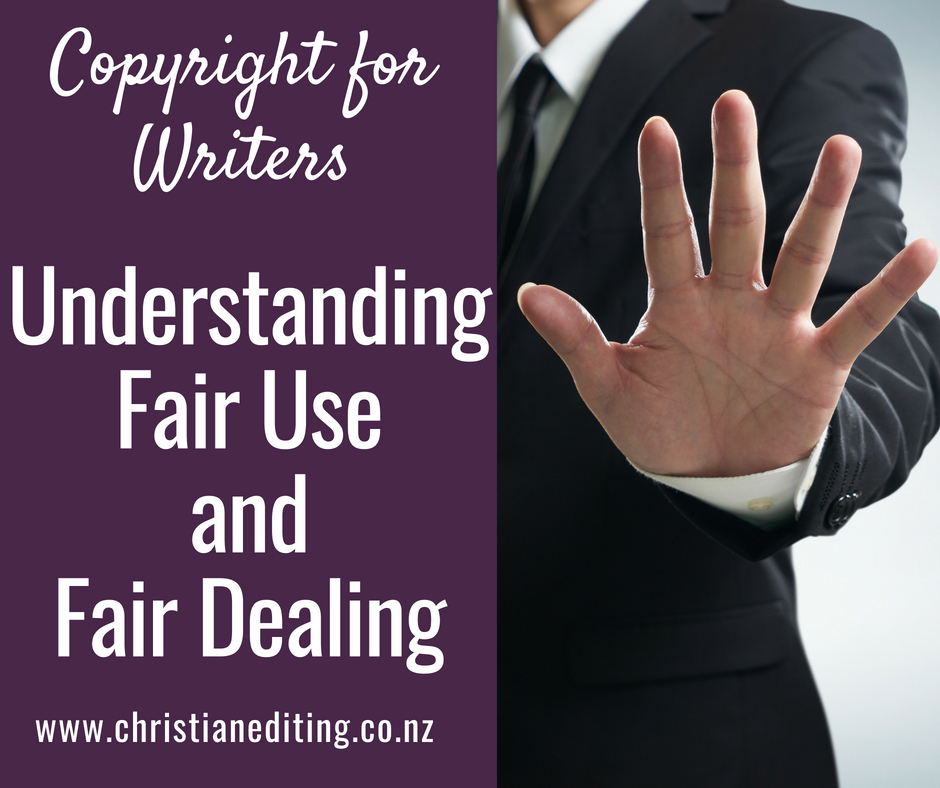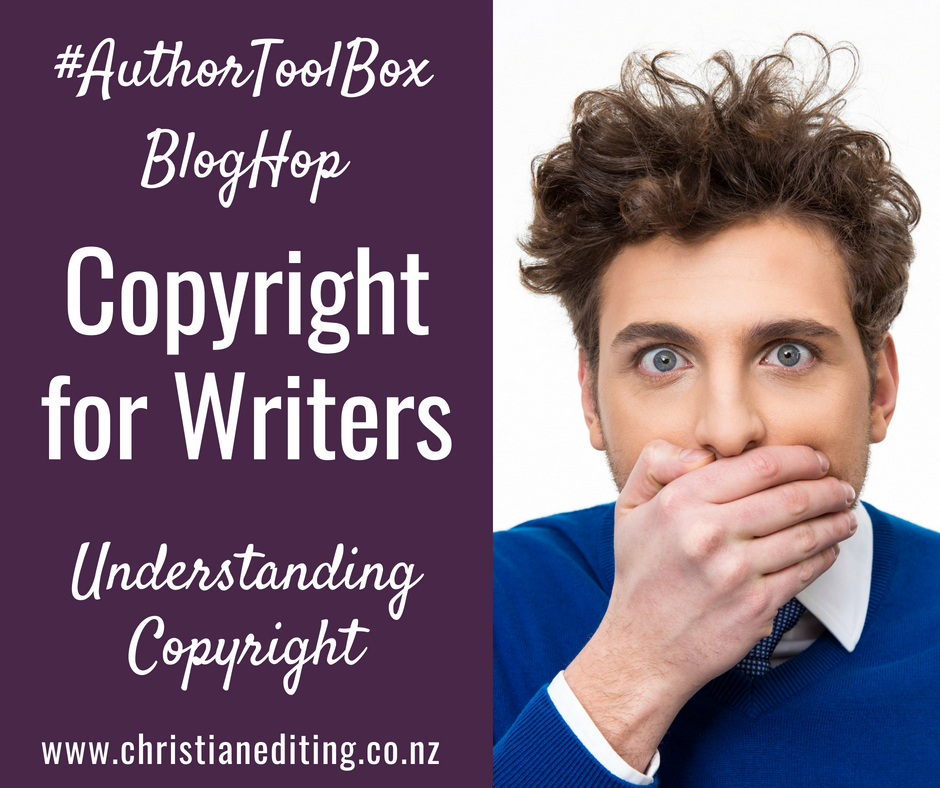My previous two posts looked at Understanding Copyright and How and When Can I Use Copyrighted Material? As I mentioned, creators (including authors and bloggers) can use copyright material without permission when it falls under the doctrine of fair use or fair dealing. That’s what we’re discussing today.
As you read this, please note that I am not a lawyer, and this is not legal advice. There is a lot of great information about copyright on the internet, but none of it is legal advice. To get legal advice, you pay a lawyer licensed to practice in your state or country.
What is the Doctrine of Fair Use or Fair Dealing?
The doctrine of Fair Use (US) or Fair Dealing (UK and New Zealand) permits limited use of copyrighted material without permission. The key word here is ‘limited’. You can’t copy everything.
But there are no clear guidelines as to how much you can copy.
When Does the Doctrine of Fair Use Apply?
The United Kingdom has three uses of copyright information that provides a defence for fair dealing:
- For the purposes of research or private study.
- To allow for criticism or review.
- For the purpose of reporting current events (excluding photographs).
These are pretty straightforward yes/no questions for those who are using copyrighted content. However, the use also needs to be ‘fair’, which isn’t so easy to define. ‘Fair’ can include consideration whether the use of the work affects the market of the original work, whether the amount used is reasonable and appropriate, and whether the original creator receives sufficient acknowledgement.
US law considers four factors in a Fair Use defence:
In determining whether the use made of a work in any particular case is a fair use the factors to be considered shall include:
- the purpose and character of the use, including whether such use is of a commercial nature or is for nonprofit educational purposes;
- the nature of the copyrighted work;
- the amount and substantiality of the portion used in relation to the copyrighted work as a whole; and
- the effect of the use upon the potential market for or value of the copyrighted work.
Fair Use and Fair Dealing
Overall, while the UK and the US use different language, the intent is the same: to prevent the inappropriate unauthorised use of copyrighted material.
But what does this mean for authors and bloggers? How can we tell if our use is fair? In my non-expert opinion, there are four main questions we must ask ourselves before copying information to use in a blog post or include in a book:
- Is the original work covered by copyright?
- Is my proposed use commercial?
- Is my proposed use transformative?
- How much will I use?
Is the original work covered by copyright?
This will depend on:
- The date the work was first published.
- Where the work was first published.
As a general guide, anything first published before 1923 is likely to be in the public domain.
Steve Laube has blog post with some handy information on how to find if a work is covered by copyright:
Note that these are US resources. These sources may not give correct information if the work in question was first published outside the US.
Is my proposed use commercial?
Copying or reproducing copyrighted material is more likely to fall under fair use if there is no commercial benefit to the user. This means churches can quote a verse of the week in a church bulletin, but can’t reproduce and sell the Book of Acts. A quote in a free blog post is more likely to be considered fair use than the same quote in a paid book or training course.
Is my proposed use transformative?
Transformative uses add something new to the original work, and this is more likely to be considered fair use. Common examples of transformative use include commentary and criticism, and parody:
Commentary and Criticism
The principle of fair use allows authors to quote from the original work for the purpose of commentary or criticism. This could include:
- writing an article or blog post
- writing a book review
- writing a news report
The underlying rationale of this rule is that the public reaps benefits from your review or blog post or news report, and that benefit is enhanced by including some of the copyrighted material.
Of course, the original author may reap some benefit as well, especially if it’s a glowing five-star review.
Transformative use implies that there is more original work than quoted work. Quoting a hundred words from another author and adding a sentence of your own is less likely to be considered transformative than quoting a sentence from another author and adding a hundred words of your own (I may be wrong. But I don’t want to be the test case. Do you?).
Parody
Parody imitates a well-known work in a comedic way (think Weird Al Yankovic or The Key of Awesome).
Parody permits extensive use of the original. Print examples include Where the Wild Mums Are and Where the Wild Dads Are.
The day Mum didn’t get dressed and went on strike, Dad called her ‘a Wild Thing’ and Mum said ‘Cook your own dinner’ and stomped off upstairs to have a bath . . .
I couldn’t possibly relate.
How much will I use?
The larger the proportion of the total work quoted, the less likely it is to be considered fair use.
This includes the quantity and the quality of the work. If you only quote one line, but that line is key, it’s less likely to be considered fair use:
Even a smaller percentage of the work can be an infringement if it constitutes the heart of the work being quoted.
This question of proportion is relevant with song lyrics. A book meme (i.e. non-commercial use) quoting ten words from an 80,000-word novel is likely to be considered fair use. A novel (i.e. commercial use) quoting ten words from a 200-word song is less likely to be considered fair use. A novel quoting an entire poem is not fair use.
Unfortunately, there are only guidelines. There are no clear rules:
Courts evaluate fair use claims on a case-by-case basis … there is no formula to ensure that a predetermined percentage or amount of a work—or specific number of words, lines, pages, copies—may be used without permission.





